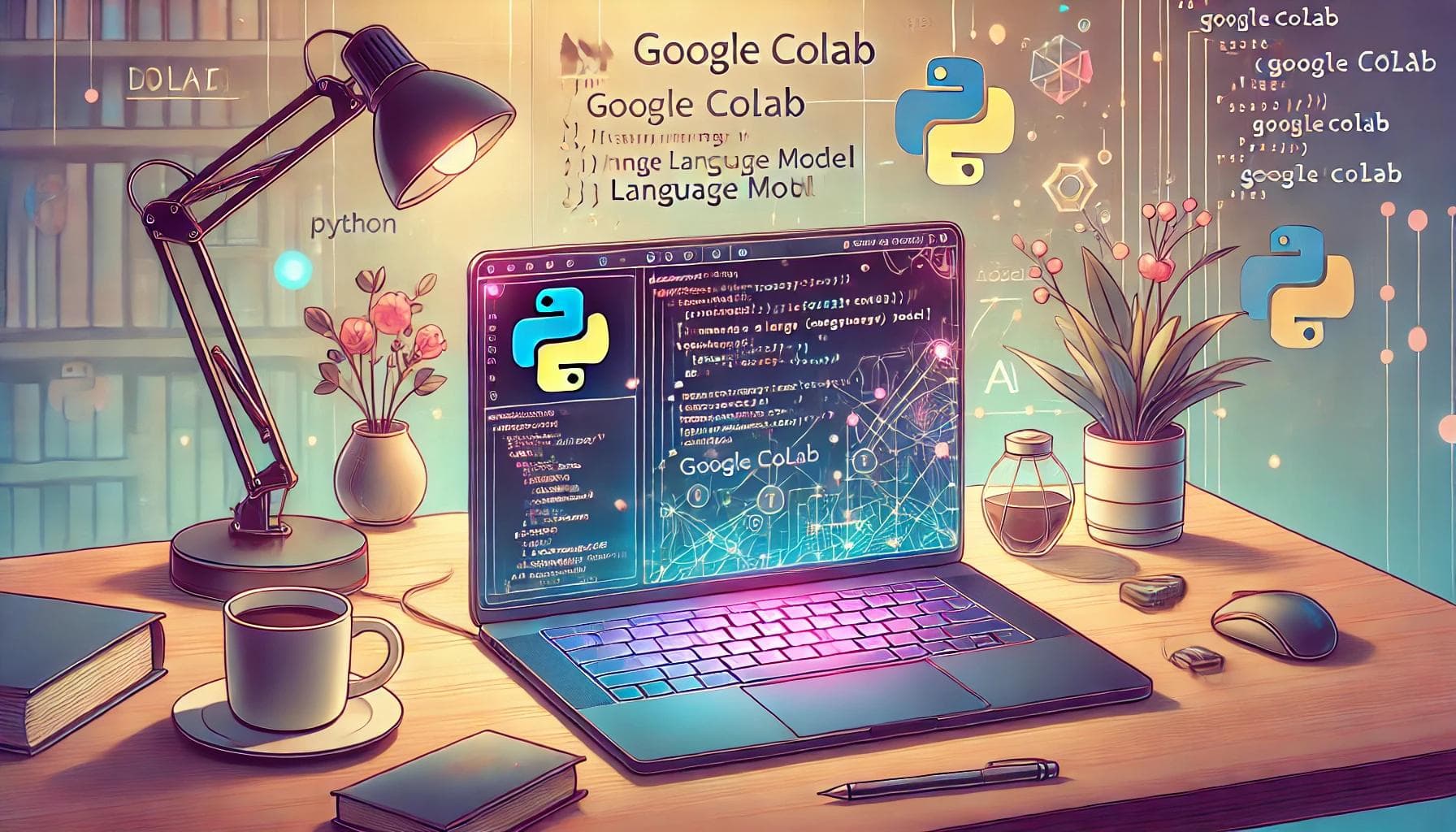|4 min reading
Run Large Language Models for Free on Google Colab: A Complete Guide

Don't Miss This Free AI!
Unlock hidden features and discover how to revolutionize your experience with AI.
Only for those who want to stay ahead.
Large Language Models (LLMs) are revolutionizing the field of data science, enabling groundbreaking tasks like text generation, language translation, and complex question answering. However, running these advanced models often demands significant computational power, which can be expensive.
Enter Google Colab—a cloud-based platform that democratizes access to powerful computational resources, making it possible to run LLMs for free. In this guide, we’ll walk you through everything you need to know to start using LLMs on Google Colab.
Can You Run LLMs on Google Colab?
Yes, you can! Google Colab provides free access to a Tesla K80 GPU with 12 GB of RAM. While it may not suffice for training the largest LLMs, it’s more than adequate for fine-tuning smaller models or running predictions. Pre-trained models from providers like OpenAI, Hugging Face, and others can be leveraged seamlessly on Colab.
Popular LLM Providers
- OpenAI: Offers GPT-3 for generating human-like text.
- Hugging Face: Hosts a variety of pre-trained models for diverse NLP tasks.
- Fireworks AI: Focuses on enterprise applications of LLMs.
Setting Up Your Environment in Google Colab
Getting started with Google Colab is straightforward. Follow these steps:
Step 1: Create a New Notebook
Visit the Google Colab website.
Click on File > New Notebook to create a new Python 3 notebook.
Step 2: Install Required Libraries
Run the following command to install necessary Python libraries:
!pip install transformers
Step 3: Enable GPU Acceleration
Navigate to Runtime > Change runtime type.
Under Hardware accelerator, select GPU from the dropdown menu.
You’re now ready to dive into running LLMs on Colab.
Mounting Google Drive in Google Colab
Integrating Google Drive with Colab allows you to easily access datasets and save your work. Here’s how to do it:
Run this code in a new cell:
from google.colab import drive drive.mount('/content/drive')
Follow the link that appears, sign in with your Google account, and copy the authorization code.
Paste the code into Colab to mount your Drive.
Now you can access your Google Drive files directly within the Colab notebook.
Running Large Language Models in Google Colab
With the environment ready, let’s run a pre-trained model using Hugging Face’s transformers library. Here’s an example for sentiment analysis:
from transformers import pipeline # Initialize the model nlp_model = pipeline('sentiment-analysis') # Make a prediction result = nlp_model('We are learning to use Google Colab for running large language models.') print(result)
This code performs sentiment analysis, but you can replace 'sentiment-analysis' with tasks like 'text-generation' or 'translation_en_to_fr' based on your needs.
Conclusion
Google Colab opens up new opportunities for data scientists and developers to work with LLMs without the financial burden of expensive hardware. Its free GPU acceleration and user-friendly interface make it an ideal platform for experimenting with cutting-edge models.
Start your journey with Google Colab today and harness the power of large language models to transform your projects.
FAQ
1. Is Google Colab completely free?
Yes, Google Colab offers a free tier that includes GPU support. However, you can upgrade to Colab Pro for longer runtime limits and better GPU options.
2. Can I train large models on Google Colab?
While training very large models might be challenging due to hardware limitations, fine-tuning smaller models or running inference is feasible.
3. What are some alternatives to Google Colab?
Alternatives include Kaggle Notebooks, Amazon SageMaker, and JupyterHub, though many of these might involve costs or lack free GPU access.
4. How can I optimize Colab’s performance for LLMs?
Enable GPU acceleration, clear unused variables, and use efficient data loading techniques to optimize performance.
Related Articles

Black Box AI vs Explainable AI (XAI): The Ultimate Guide for Smart Developers and Marketers
Discover the difference between Black Box AI and Explainable AI. Learn how Merlio helps you control, compare, and optimi...

Fix ChatGPT Login Issues: Troubleshooting Guide & Reliable Alternatives
Experiencing trouble logging into ChatGPT? This guide provides comprehensive solutions to common ChatGPT login errors an...

Unlock Claude 3.7 Sonnet's Full Power: Extended Thinking & Internet on Merlio
Discover how to use Claude 3.7 Sonnet's advanced thinking and web search capabilities

AI Code Converter: Generate and Translate Code Across Languages
Effortlessly translate or generate code between Java, Python, C++, JavaScript, Ruby, and more in seconds
Latest Articles

AI Clothing Remover Understanding the Reality Ethical Risks and Safer AI Use
Learn what AI clothing remover means, why it raises ethical and legal concerns, and how responsible AI platforms promote...

Sushi AI: What It Means and How AI Is Changing Sushi Restaurants
Discover what Sushi AI means, how AI is used in sushi restaurants, smart ordering, menus, and how AI tools like Merlio h...

Sakura AI Review: Features, Pricing, Safety, Privacy, Limits & Better Alternatives
Explore Sakura AI in detail. Learn features, pricing, safety, privacy, message limits, and whether Sakura AI is worth us...
